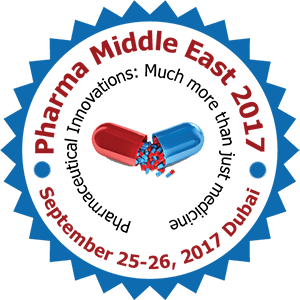Mahmoud Rafae
Benghazi University, Libya
Title: Effect of antibiotics which distributed in the hospital of Al Wahda(Derna) by medical supply ward for three months on number of patients admitted and compare these results with bacterial culture results done in laboratory
Biography
Biography: Mahmoud Rafae
Abstract
Introduction:
Antimicrobial resistance(particularly antibiotic resistance) is spreading now, and there are few prospects for the development of new classes of antibiotics in the short term. However, there is today considerable awareness of the need for and political support for action to combat antimicrobial resistance. Antimicrobials are being used and misused by patients and healthcare providers. Monitoring antimicrobial prescription and consumption behavior provides insights and tools needed to inform therapy decisions, to assess the public health consequences of antimicrobial misuse and to evaluate the impact resistance containment interventions. All reports from WHO tell us about post antibiotics era that will be start if we don’t work quickly on antibiotics resistance by all efforts and due to situations of my country in Libya now need a lot of studies to decrease corruption in budgets put for health sector.
Experimental methods:
Study made by pilot method and we depend on data collected from dispensing papers of medical supply ward in Al Wahda hospital.
*medical statistics office of Al Wahda hospital
*Al Wahda hospital laboratory
*data collected for 3months and on 477 in- patients of wahda hospital.
Results and discussion:
After collecting data from dispensing paper that is based on treatment chart, we covered 477 patients for 3months by 2169 ceftri-702 gent-1360 aug-547 cefot-23amik. And we noticed that the percentage of higher antibiotics use was ceftriaxone equal to 45.18 % of totality and use of broad antibiotics rather than narrow antibiotics by 84.9% and all principles of clinical pharmacology direct to use narrow firstly plus first line antibiotics therapy as shown in figure 1,2 respectively. And the percentage of patients those received antibiotics that is available in hospital from all patients was 25.3% . we found that the most higher antibiotic sensitive to bacteria was CIPRO and others appear as shown in table below where Ceftriaxone in lower rank by 2.3% as shown in figure no:3 and we found percentage of cultures done to inpatient was 28.09% to all patients' take antibiotics and others take its blindly and we noticed that the higher bacteria strain diagnosed was staph .c. aur and we found that 70 culture tests from 134 shown no bacterial growth which shows mistake in medical requests. As shown in fig:no 4, we found the higher ward using antibiotics from all wards is FMW and this ward less one request to culture by 2 requests along study time.
|
antibs |
ceftr |
aug |
gent |
cefot |
amik |
|
Totality% |
45.18 |
28.33 |
14.62 |
11.39 |
0.48 |
Figure 1
|
Antibiotic |
Broad |
Narrow |
|
% Total |
84.9 % |
15.1 % |
Figure 2
|
38.71% |
Staph .c.aur |
|
20.97% |
E.coli |
|
12.9% |
Stap.c.saprophytic |
|
11.29% |
Klebsila pnumonia |
|
4.84% |
Staph.MRSA |
|
4.84% |
Strepto .c. BHSC |
|
1.61% |
Staph .epid. |
|
1.61% |
Proteus (ESPL) |
|
1.61% |
proteus |
|
1.61% |
Pseduo.aerg |
Figure 4
Conclusion:
1- Dispensing antibiotics depending on treatment chart decrease wasting in hospital budget.
2- Decision of antibiotics use not comply enough with cultures results of our lab.
3- Staph and Kleb, E.coli much more present in(gyne –pediatric) wards in our hospital.
4- No antibiotic should be used recklessly. However difficult it appears to be to select for resistance in vitro. On the other hand, the attitude that 'All new antibiotics should be locked away' risks stifling innovation whilst denying life-saving treatment debate on their use of new anti-gram-positive agents are sure to intensify and it is vital that they take place on a basis of science not knee-jerk restrictions or over-zealous marketing .

